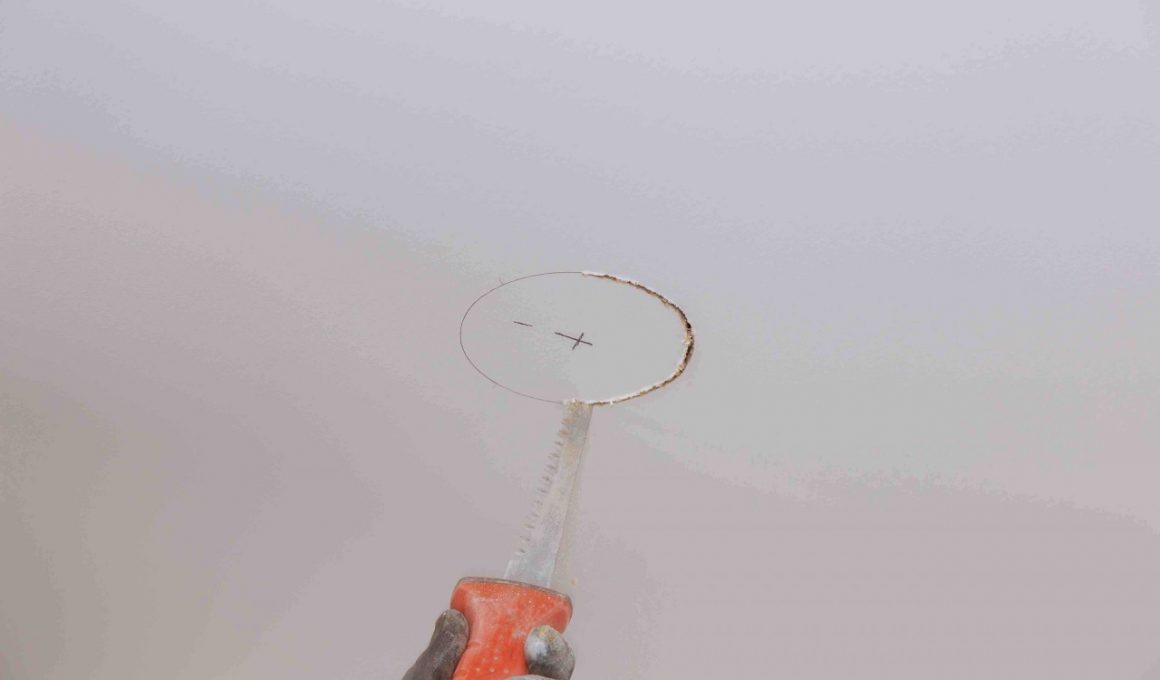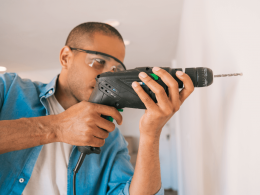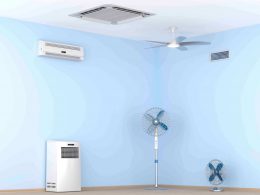Have you recently purchased a portable air conditioner and you’re realizing that venting it through a window just won’t do? Do you need to cool a room without any windows? When you buy any home appliance you want to make sure it does its job without causing you any inconvenience either on installing or operating it. So, naturally, if venting your portable air conditioner through a window isn’t an option for you, you go on a search for equally effective ways to do so. Lucky for you we have all the tips and tricks, so keep on reading to find out more about the many different ways you can vent a portable air conditioner without a window.
Why Do You Need to Vent a Portable Air Conditioner?
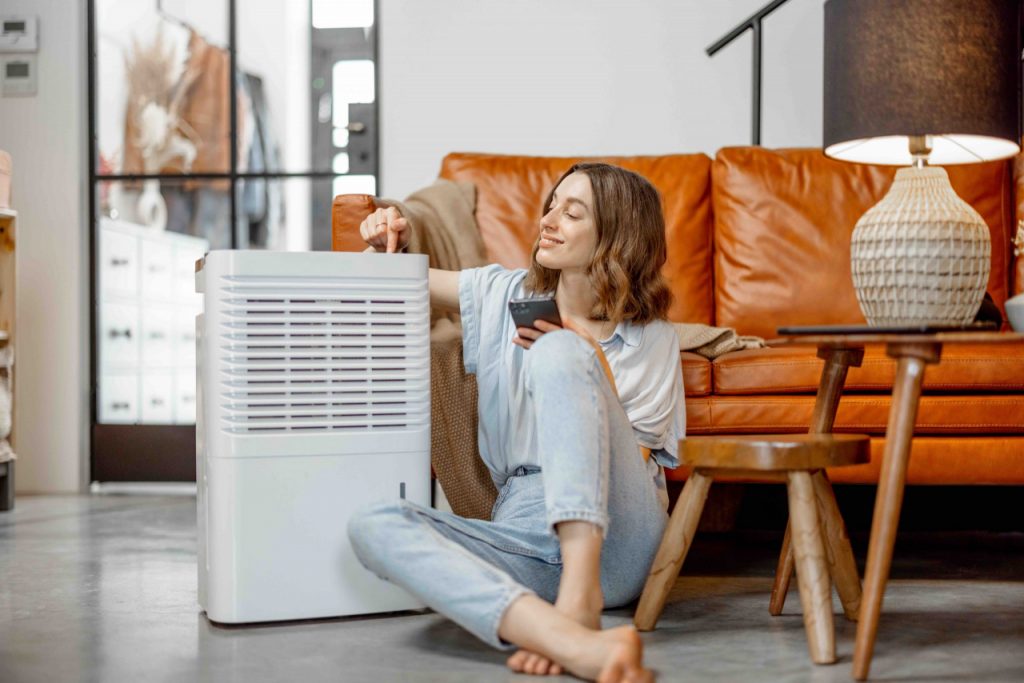
This is how a portable air conditioner works: it takes the hot air from inside the room and cools it down, so, naturally, the hot air it just took in needs to be extracted somewhere. So in order for the room to cool effectively, the hot air must be vented outside. Luckily, all portable air conditioners come with their own installation kits to make it easier for you to connect the hose or hoses in the back of the unit to the outside area. Now that we’ve established the crucial reason why portable air conditioners need to be vented, let’s discuss how it can be done without a window.
How to Vent a Portable Air Conditioner Without a Window
Now that we’ve covered the importance of portable air conditioner venting, you may be wondering if you have other options besides a window. Well, of course you do. Through a window is just the most common and practical way of doing it, but there are in fact a lot of other ways just as effective to vent your portable air conditioner. So, let’s dive into the details.
Through the door
After a window, one of the most common ways to vent a portable air conditioner is through a door. It is important to consider where the door leads to, because if it leads into another room or a hallway, it is difficult to get the needed temperature difference that makes the air conditioner effective. However, if it leads to a balcony then it would directly vent the warm air outside and that would work perfectly. This will work even better with sliding doors because every portable air conditioner comes with its own installation kit that makes the unit’s hose fit in any spot.
Through the ceiling
This technique is most popular in offices where it can get pretty hot during the summer. Venting your air conditioner through the ceiling will require a drop ceiling, which many offices have. To install the air conditioner’s hose, you will need a drop ceiling venting kit. This specialized kit can extend the length of the hose up to 10 feet, and they fit any portable air conditioner.
Through the wall
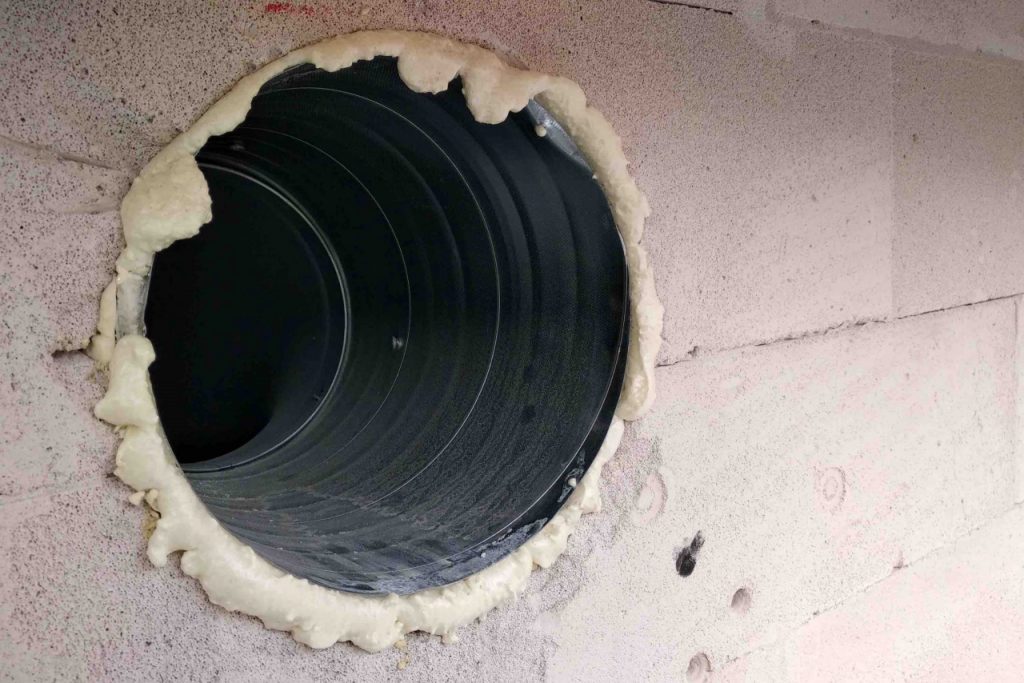
Another effective way to vent a portable air conditioner is through a wall. What you need to do to make this happen is to drill a hole in your wall the same size as the unit’s hose. Venting a portable air conditioner through a wall is also possible with a dual-hose air conditioner, but it’s more difficult since you’ll have to drill two holes in your wall. What you need to be aware of is not to choose a thicker wall since only a professional can drill through them. Your best choice is to pick a thin wall that has a low-density concrete. Other than that, some rooms already have holes for vents in the wall that are just as effective, which brings us to our next option.
Through a dryer vent
If you have a dryer vent in your laundry room, you can most definitely use that to vent your portable air conditioner. It has the same dimensions as an AC vent, and AC manufacturers even suggest this venting option to people who can’t use windows to vent their portable air conditioners. The only disadvantage to this method is that a dryer vent is typically in a room that doesn’t need air conditioning, so you might find it difficult to cool the air of the room of your choice. But of course, there is a simple solution to this, you just need to purchase a longer hose in order to move the portable air conditioner freely.
Through a chimney
Venting your portable air conditioner through a chimney while uncommon, it’s not impossible. You will of course need to have a chimney, and you’ll use this technique during the summer when you’re not using the chimney. It can be a little tricky, which is why it’s better to get a professional to help you out. Other than that, you will also need a longer hose unless you live in a smaller house where the length of the chimney is not very high.
Do All Portable Air Conditioners Need to Be Vented?
If none of the above venting options work for you, or if you just prefer a more low-maintenance air conditioner, we’ve got a solution for you too. So to answer your question: no, not all portable air conditioners need to be vented. A good and effective example would be “ventless air conditioners”, which do not feature a hose and can also be called “swamp coolers”. They’re basically a mix of a room fan and humidifier and are a very popular choice for people who do not prefer portable air conditioners that need to be vented.
To make the most out of ventless air conditioners, it’s best to use them where the air is dry. If the air is dry, you won’t need much cooling, plus, the added humidity in the air will indeed be refreshing. However, using a ventless air conditioner in an area where the humidity levels are high will only make the air more stuffy and the unit non-effective.
Conclusion
When it comes to portable air conditioners, the world is your oyster. There is a great variety of them. They are so easy to use and allow such flexibility that suffering from a hot summer at home is not at all necessary. And if you’re wondering whether they use a lot of electricity, you’ll be surprised to know that if used properly, they are cost-efficient. What else can one ask for?






